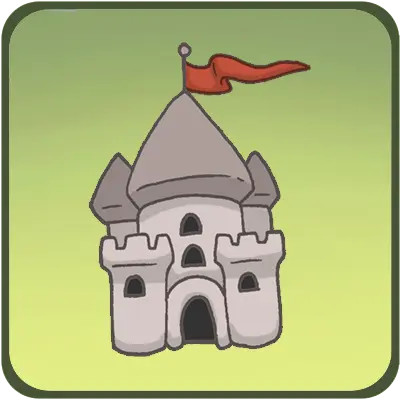The period we are discussing here is the second half of the Middle Ages. The Middle Ages lasted from the year 500 to the year 1500. At this place we discuss the period of the year 1000 to the year 1500. This part of the Middle Ages is also divided into the High Middle Ages and the Late Middle Ages. The High Middle Ages lasted from the year 1000 to the year 1300 and the Late Middle Ages from the year 1300 to the year 1500.
In the High Middle Ages, the population of Western Europe had grown considerably. This was because the farmers had invented better techniques for mining land. They also managed to make the land more fertile, making the harvest bigger. The cities grew. But the plague was a major disaster in history. In the year 1347, a great many people in Europe died of the plague. As a result, the population was very thinned out.
Around the year 1000 the Catholic Church still had a great urge to expand its territory. Among other things, she did this by waging war with the Muslims. These wars are called crusades. But the kings also wanted to expand their territory. This led, among other things, to the Hundred Years War between England and France. This war lasted from 1337 to the year 1453. In fact, the war lasted 116 years. But in the meantime, there was often peace. So the hundred-year war was actually several wars that lasted about 100 years. At the height of the war, England had conquered much of the land on the mainland. But at the end of the war, they lost almost everything. In the end, Calais was the only area they had left on the mainland.
In this era, many cities and states were formed. But these also had to be controlled. In the early Middle Ages, the king had lent a lot of land. As a result, feudalism was developed. But history had also shown that this system did not work properly. It meant that the land was fragmented and was governed by lords and vassals. The king had little more to say. The kings wanted to rule their territory from a capital. They wanted the pieces of land he once lent back. When the King of France had a very large contiguous empire after the hundred years, he wanted to rule it through civil servants.
A stand society was created. In this society, the king was at the top. Below was the clergy. These were the people of the church. Below was the nobility and at the very bottom were the citizens. So the church had a lot of power. The Pope was allowed to appoint the bishops who ruled parts of the kingdom. But the emperor also appointed some bishops. In this time church was and is not yet separate. If you had ecclesiastical power, you often had worldly power. In the end, Emperor Henry IV and Pope Gregory VII got into a fight over the appointment of the bishops. After many years it was decided that the emperor could no longer appoint bishops. This became a task that only the Pope could perform.
- The battle between church and stateIt will happen To you. You're four years old. You can only just talk and you'll be crowned king. In history, this was quite common.
- Rise of trade and the emergence of citiesThe moment the Dutch cities started to grow was a very important point in history. Do you live in one of the oldest cities in The Netherlands?
- Rise of urban bourgeoisry and increasing independence of citiesHave you ever moved? Everyone is now free to live wherever they want. In history, you had to buy yourself free first if you wanted to live in the city.
- The beginning of state formation and centralisationWhat do you say; do you live in the Netherlands or in Holland? There's a difference. If we go back in time we see that Holland was ruled by Dutch graves.


